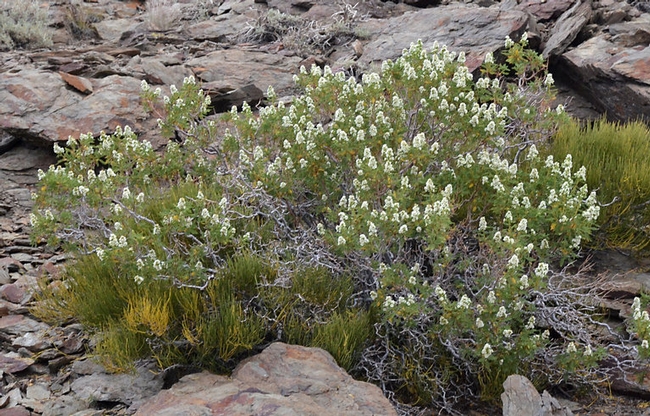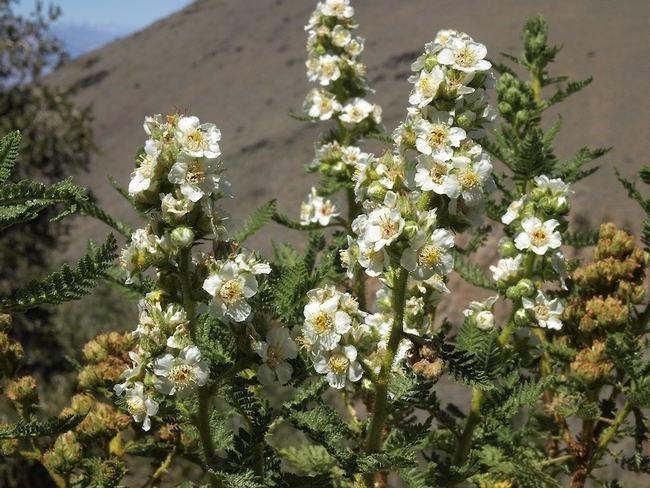Southwest Connections, part 2
Last time we learned about Gambell oak (Quercus gambellii) and a couple of Rhus species, R trilobata and R aromatica. And last year, I wrote articles here about another couple of foundational plants in my xeriscaped yard: sugarbush (Rhus ovata) and coffeeberry (Frangula californica). Today I'd like to highlight another tough-as-nails shrub. All of these are plants are perfectly suited to our dry land of temperature extremes. Though they thrive in lean, fast-draining soils, you're not likely to kill any of these with regular garden watering. Some native shrubs (the gorgeous flannel bush and our native Ceanothus come to mind) are so intolerant of irrigation that a summer watering is like a death sentence! Not so with the bushes I am profiling. They are all carefree in every way.
Anyone who has driven to the trailheads of Bishop Creek has probably noticed Chamaebatiaria millefolium (now that's a mouthful!), because of the attractive, fern-like foliage that gives the plant its unsurprising common name—fernbush. You'll see lots of it just before you get to Bishop Creek Lodge on the south fork of Bishop Creek or just past Aspendell on the north fork. But don't think fernbush has to sleep the winter away under a blanket of snow. I've seen this highly adaptable bush in rocky, inhospitable sites in the White Mountains, and it does great down here in the wilds of West Chalfant.

Even fernbush's scientific name is appealing! Fernbush is monotypic, meaning it is the only species in its genus. The genus name (Chamaebatiaria) comes from the similarity in appearance (though not at all related) to mountain misery (Chamaebatia), the ubiquitous groundcover of the west slope of the Sierra Nevada (the Wawona area in Yosemite National Park is a great place to see this plant). And the species name—millefolium—is the same as for one of my favorite garden flowers, yarrow (Achillea millefolium). And then we could move on to the interesting scientific name for yarrow…but maybe another time!
Anyway, fernbush is a winner in all ways. Mature plants get to be 4-6' high and wide. They are supposedly very tolerant of pruning and shearing back, though I've never felt a need to prune mine, because they seem to maintain a perfect form all on their own. You can find fernbush online at High Country Gardens and occasionally at Chalfant Big Trees—if I haven't already snatched them up!
